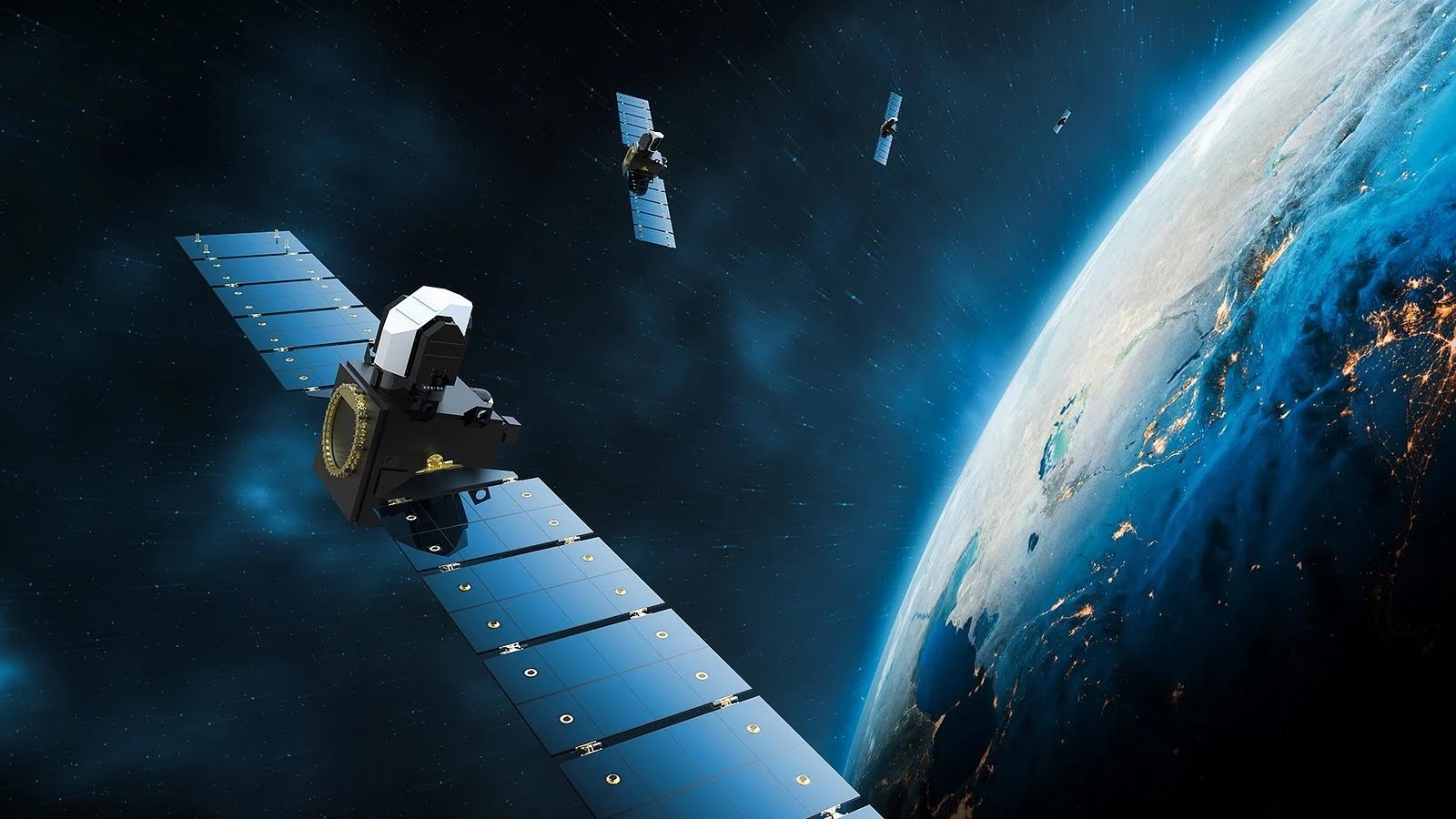20.09.2024
Kay Sears: ‘We’re going to connect the E-7 to the Foo Fighter network and the MEO missile warning and tracking layer’

Rendering of the SDA Foo Fighter constellation. Credit: Millennium Space Systems
NATIONAL HARBOR, Md. — Boeing plans to demonstrate sensor fusion technology that could enhance military situational awareness by combining data from airborne and space-based sensors, a senior executive said.
This fusion of sensor data could be delivered to operators on the ground or in cockpits, said Kay Sears, vice president and general manager of Boeing Space, Intelligence & Weapon Systems.
The plan is to leverage data from the E-7 command-and-control aircraft that Boeing makes for the U.S. Air Force and data from missile-tracking satellites being developed by Boeing’s subsidiary, Millennium Space, for the U.S. Space Force. This air-space fusion aims to address a longstanding challenge faced by the military: delivering timely and relevant data to operational units, Sears said Sept. 16 at the Air Space & Cyber conference.
“We need to make sure those lightning strikes actually exist,” Sears said, using military briefing slide imagery as a metaphor for the urgency of delivering real-time, actionable data to warfighters.
Satellites in LEO, MEO
Boeing’s sensor fusion effort involves two satellite programs awarded to Millennium Space. One of these programs is the “Foo Fighter” network, a $414 million low Earth orbit (LEO) missile-tracking satellite constellation being developed for the U.S. Space Development Agency. These satellites are equipped with electro-optical and infrared sensors to detect and track advanced missile threats, including hypersonic missiles.
The company also aims to integrate medium Earth orbit (MEO) missile-warning satellites that Millennium is building under a $500 million contract with the U.S. Space Force. This, combined with the E-7 Wedgetail’s electronically scanned array radar, will provide a multi-domain operational picture, said Sears.
“We’re going to connect the E-7 to the Foo Fighter network and the MEO missile warning and tracking layer,” she said. “We want to show what kind of operational picture we can deliver when we combine all those sensors.”
The E-7 Wedgetail, in use by multiple militaries, tracks moving airborne and maritime targets simultaneously. The integration of space-based data could significantly extend its capabilities, allowing for real-time tracking of missile threats across greater distances.
This type for sensor fusion aligns with the Department of Defense’s broader initiative to integrate siloed technologies. However, Sears noted that the DoD’s organizational structure has made such integration challenging.
Quelle: SN
